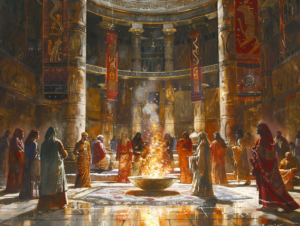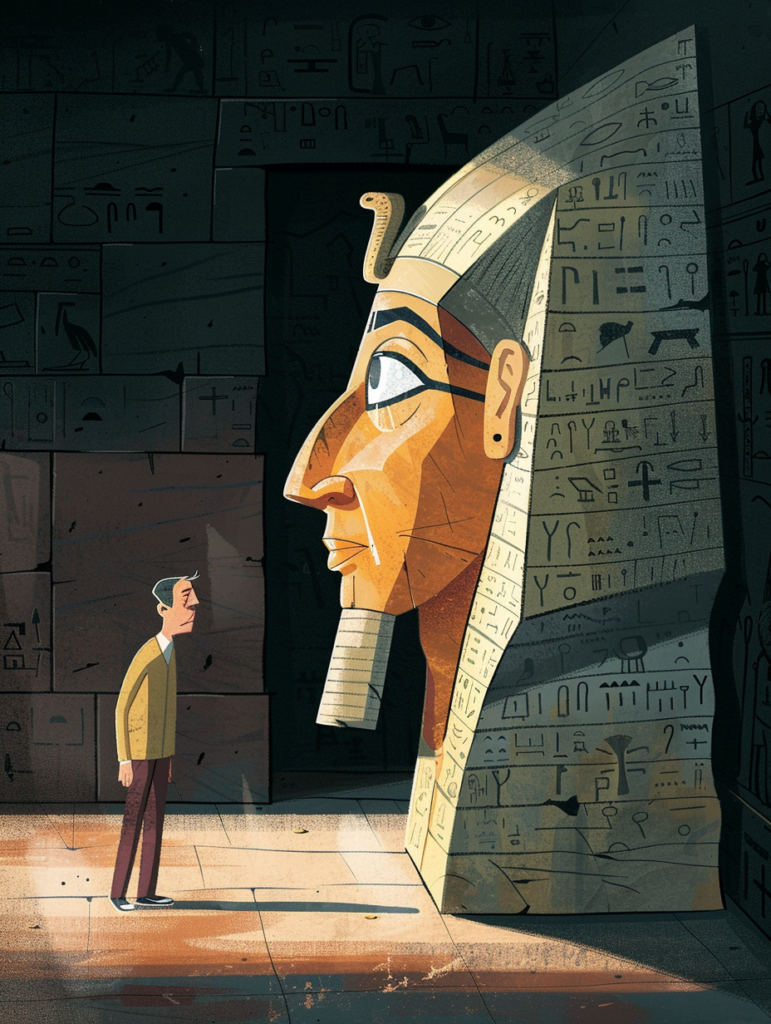Unveiling the Mysteries of Ancient Egypt: A Journey Through Time
Step into the sands of time and embark on a journey to unravel the enigmatic tapestry of Ancient Egypt. A civilization that flourished along the fertile banks of the Nile, Ancient Egypt stands as a testament to human ingenuity.

From the majestic pyramids to the cryptic hieroglyphs adorning temple walls, each artifact whispers secrets of a civilization that thrived for millennia. Join us as we delve into the depths of history to explore the grandeur, mysteries, and lasting influence of one of the world’s most captivating civilizations.
The dawn of Ancient Egypt dates back over five millennia to the predynastic period when early settlers tamed the Nile’s floodwaters and established rudimentary agricultural communities. Around 3100 BCE, the unification of Upper and Lower Egypt under King Narmer marked the beginning of dynastic rule and the onset of a glorious era.

The Old Kingdom (2686-2181 BCE) witnessed the construction of iconic monuments like the Great Pyramid of Giza, a testament to the pharaohs’ divine authority and mastery over architecture. These colossal structures, built as eternal resting places for Egypt’s rulers, continue to awe and inspire awe to this day.
The Middle Kingdom (2055-1650 BCE) heralded a period of stability, prosperity, and artistic flourishing. Pharaohs such as Amenemhat I and Senusret III embarked on ambitious building projects, erected temples, and expanded Egypt’s influence through trade and diplomacy. It was during this era that the concept of ma’at, encompassing order, justice, and cosmic balance, became central to Egyptian society and religious beliefs. However, the Middle Kingdom eventually succumbed to foreign invasions and internal strife, leading to the Second Intermediate Period and the fragmentation of Egypt’s unity.
Heading H1
Heading H2
Heading H3
Heading H4
Heading H5
Heading H6
The New Kingdom (1550-1070 BCE) emerged as a golden age of conquest, innovation, and cultural renaissance. Pharaohs like Hatshepsut, Thutmose III, and Ramses II expanded Egypt’s borders, amassed wealth, and left an indelible mark on history through military campaigns and grandiose building projects. Temples dedicated to the worship of gods, such as Karnak and Luxor, rose in splendor, while the Valley of the Kings became the final resting place of Egypt’s most illustrious rulers. Yet, despite its grandeur, the New Kingdom eventually waned in power, succumbing to foreign invasions and internal strife, marking the end of an era and the onset of a gradual decline.




Egypt’s rattle
- He heard the Martians rattle for a time and then become still.
- The giant saved Woking station and its cluster of houses until the last; then in a moment the Heat-Ray was brought to bear, and the town became a heap of fiery ruins.
- Then the Thing shut off the Heat-Ray, and turning its back upon the artilleryman, began to waddle away towards the smouldering pine woods that sheltered the second cylinder.
- As it did so a second glittering Titan built itself up out of the pit.
The second monster followed the first, and at that the artilleryman began to crawl very cautiously across the hot heather ash towards Horsell. He managed to get alive into the ditch by the side of the road, and so escaped to Woking. There his story became ejaculatory.
The place was impassable. It seems there were a few people alive there, frantic for the most part and many burned and scalded. He was turned aside by the fire, and hid among some almost scorching heaps of broken wall as one of the Martian giants returned.
Since then he had been skulking along towards Maybury, in the hope of getting out of danger Londonward. People were hiding in trenches and cellars, and many of the survivors had made off towards Woking village and Send. He had been consumed with thirst until he found one of the water mains near the railway arch smashed, and the water bubbling out like a spring upon the road.
That was the story I got from him, bit by bit. He grew calmer telling me and trying to make me see the things he had seen. He had eaten no food since midday, he told me early in his narrative, and I found some mutton and bread in the pantry and brought it into the room. We lit no lamp for fear of attracting the Martians, and ever and again our hands would touch upon bread or meat. As he talked, things about us came darkly out of the darkness, and the trampled bushes and broken rose trees outside the window grew distinct. It would seem that a number of men or animals had rushed across the lawn. I began to see his face, blackened and haggard, as no doubt mine was also.
The allure of Ancient Egypt continues to captivate the imagination.
When we had finished eating we went softly upstairs to my study, and I looked again out of the open window. In one night the valley had become a valley of ashes. The fires had dwindled now. Where flames had been there were now streamers of smoke; but the countless ruins of shattered and gutted houses and blasted and blackened trees that the night had hidden stood out now gaunt and terrible in the pitiless light of dawn. Yet here and there some object had had the luck to escape–a white railway signal here, the end of a greenhouse there, white and fresh amid the wreckage. Never before in the history of warfare had destruction been so indiscriminate and so universal. And shining with the growing light of the east, three of the metallic giants stood about the pit, their cowls rotating as though they were surveying the desolation they had made.






